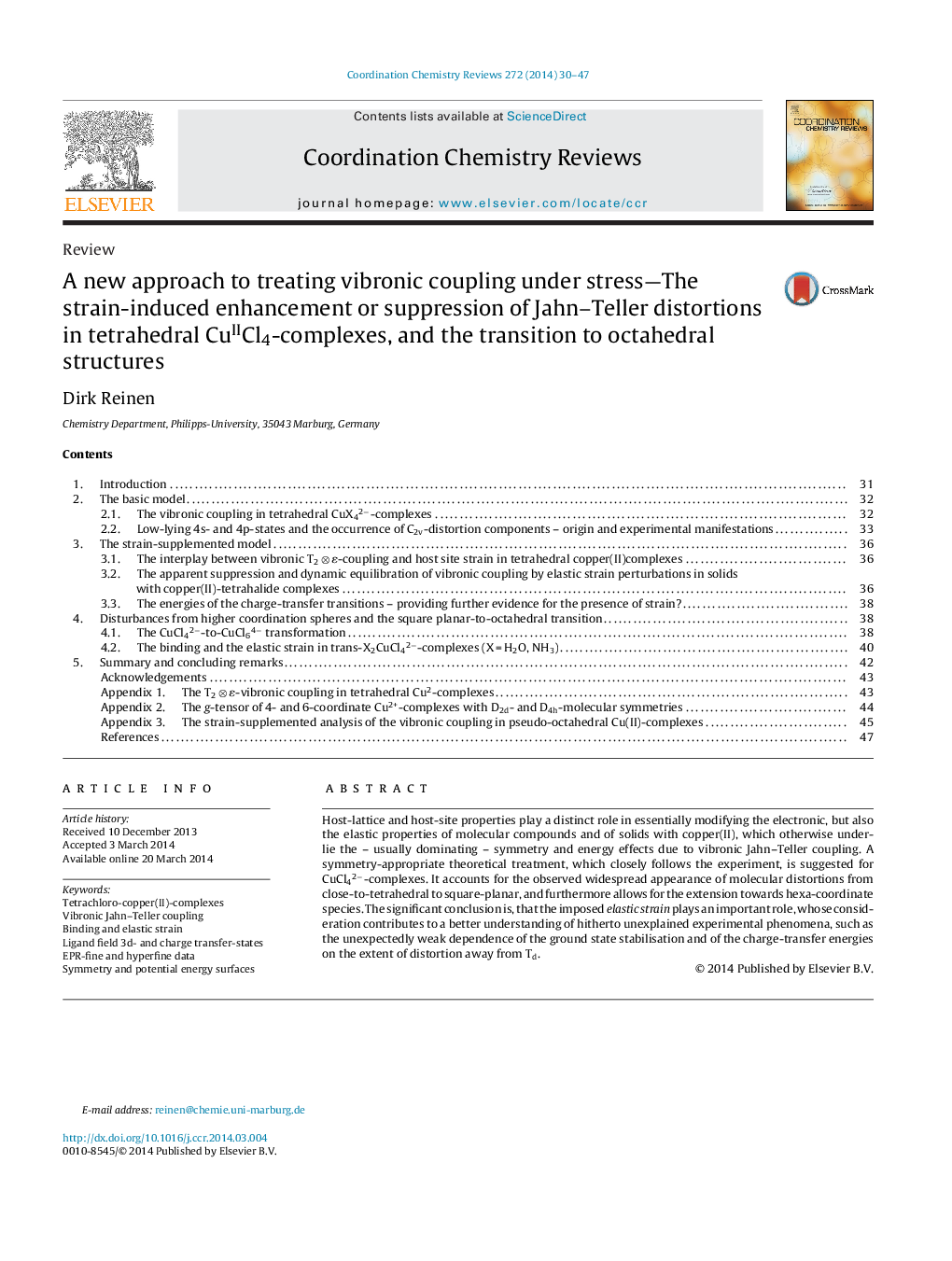| Article ID | Journal | Published Year | Pages | File Type |
|---|---|---|---|---|
| 1299475 | Coordination Chemistry Reviews | 2014 | 18 Pages |
•The influence of host-site strains on quasi-one electron Cu(II)-complexes is studied.•Elastic strains may essentially modify the stabilisation energy of CuCl42−-complexes.•The extension to CuCl4X22−-entities affords the inclusion of also binding strains.•Frequently, excited state properties are crucial to understand the ground state.•Used experimental data are particularly from d–d, charge-transfer and EPR spectroscopy.
Host-lattice and host-site properties play a distinct role in essentially modifying the electronic, but also the elastic properties of molecular compounds and of solids with copper(II), which otherwise underlie the – usually dominating – symmetry and energy effects due to vibronic Jahn–Teller coupling. A symmetry-appropriate theoretical treatment, which closely follows the experiment, is suggested for CuCl42−-complexes. It accounts for the observed widespread appearance of molecular distortions from close-to-tetrahedral to square-planar, and furthermore allows for the extension towards hexa-coordinate species. The significant conclusion is, that the imposed elastic strain plays an important role, whose consideration contributes to a better understanding of hitherto unexplained experimental phenomena, such as the unexpectedly weak dependence of the ground state stabilisation and of the charge-transfer energies on the extent of distortion away from Td.
Graphical abstractPotential energy curves for the T2-split states of pseudo-tetrahedral CuCl42−-complexes due to vibronic Jahn–Teller coupling under stress – with the state symmetries in D2d(C2v) indicated (•, orbital singlets; o, orbital doublets in D2d, which split in C2v-symmetry).Figure optionsDownload full-size imageDownload high-quality image (93 K)Download as PowerPoint slide
